Sensory Garden Ideas for Kids: Fun and Engaging Activities
Creating a sensory garden for kids can be an exciting and enriching project. These gardens are designed to stimulate the senses of touch, taste, smell, sight, and hearing, making them a perfect outdoor activity for children. Why is a sensory garden beneficial for kids? It encourages exploration and learning through interactive and fun experiences.
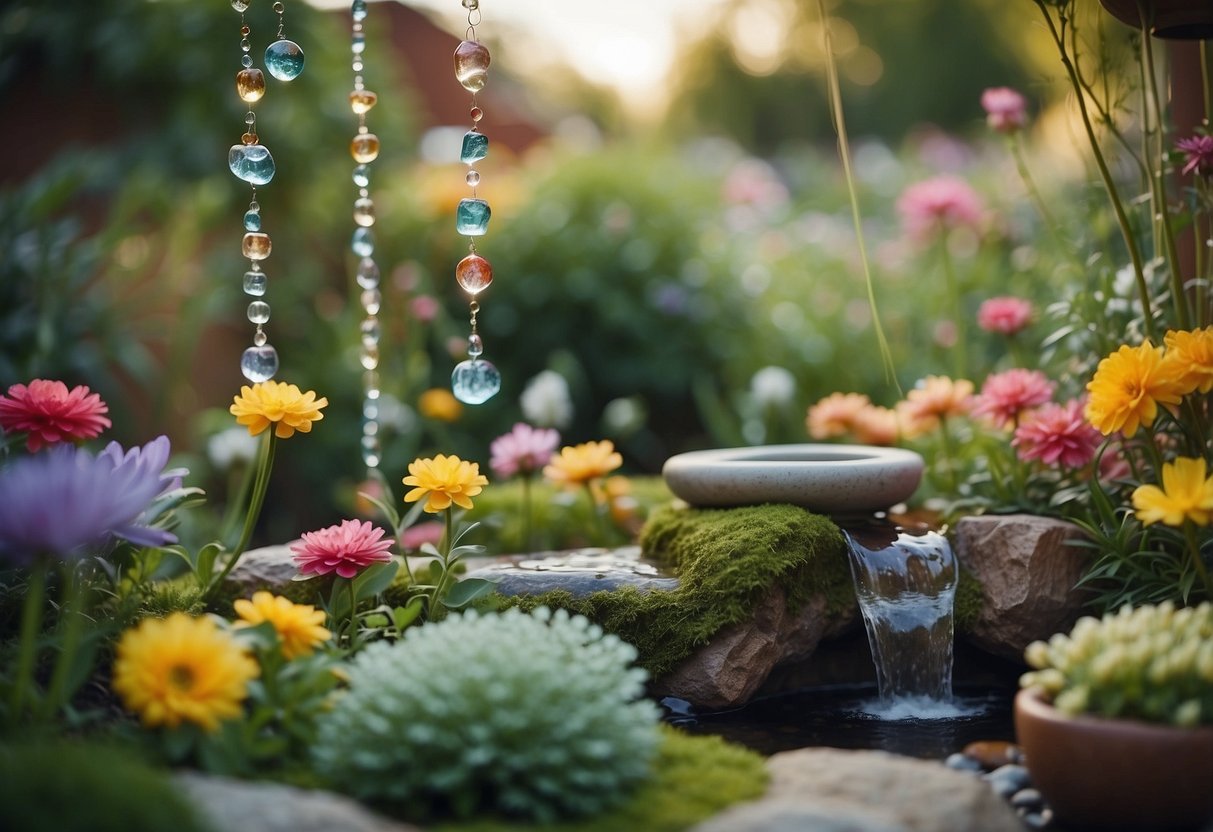
In this article, you’ll discover a variety of sensory garden ideas that will captivate and engage children of all ages. These ideas are easy to implement and can be tailored to fit any garden space, large or small. By incorporating different elements, you can create a magical place where kids can enjoy and learn from nature.
1) Tactile Pathways
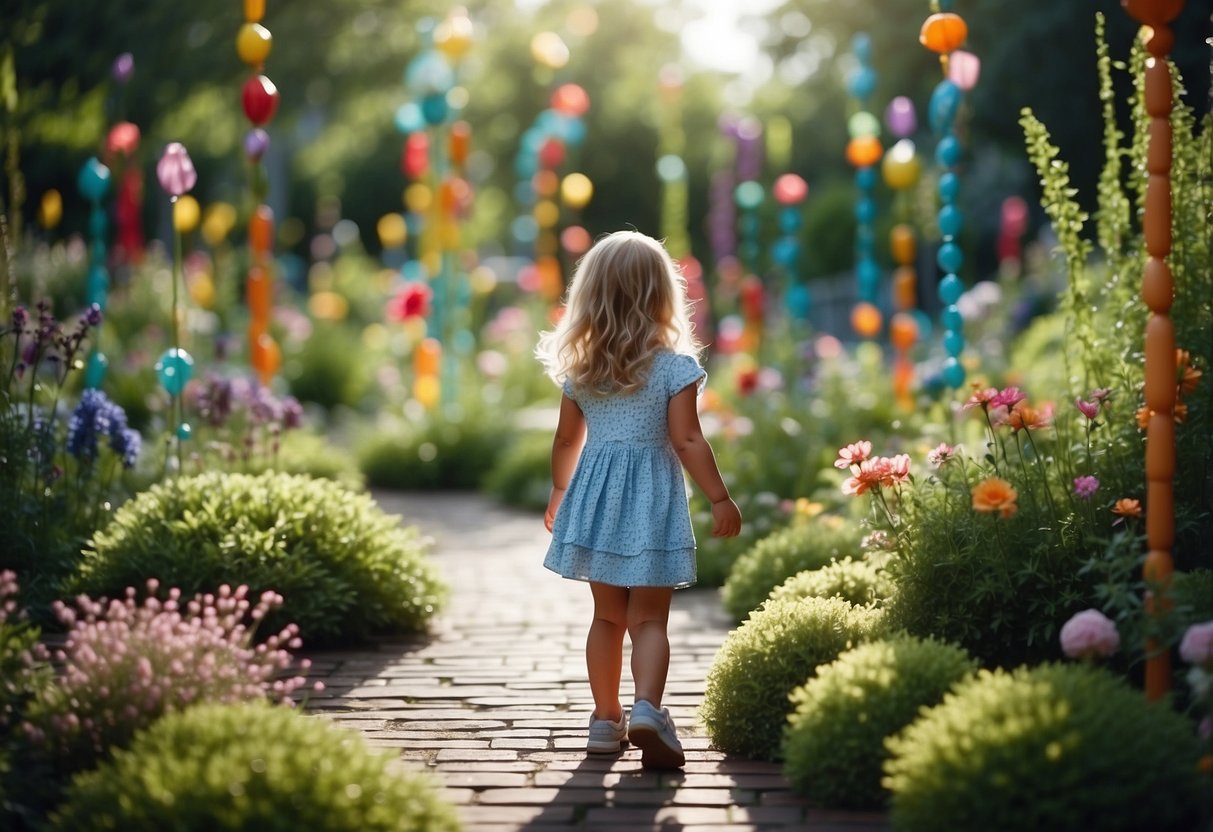
Creating tactile pathways in your sensory garden is a fun way to engage children. Use materials like pebbles, grass, and mud to make different textures.
You can also add stepping stones, wood planks, and sand. Feel free to mix and match these materials.
Make sure to let the kids walk barefoot. They will love the feeling under their feet. This can help them connect with nature.
You could even use items like shells and sticks for extra variety. Have fun experimenting with different textures.
2) Musical Instruments Corner

Creating a musical instruments corner in your sensory garden is a fantastic idea. It allows kids to explore different sounds and rhythms in a fun and interactive way.
You can include items like chimes, drums, and xylophones. Arrange them at different heights so children of all ages can play.
A musical garden combines the joy of music with the outdoors. Kids can make music while feeling the breeze and hearing the birds. It’s a magical experience that encourages creativity.
Consider adding some seating so kids can relax and enjoy the music they create.
3) Interactive Sensory Wall

An interactive sensory wall is a fantastic way to engage kids in a sensory garden. You can attach various items like mirrors, chimes, and textured panels to a wall or fence. These elements are great for sensory play and encourage kids to explore different textures and sounds.
Use weather-resistant materials to ensure your sensory wall lasts. Items like rubber, plastic, and treated wood work well outdoors.
Incorporate bright colors and interchangeable elements to keep the wall interesting. This way, children will always find something new to touch, see, or hear.
4) Calming Water Feature

A calming water feature can greatly enhance your kids’ sensory garden. The gentle sound of water trickling or flowing is soothing and can help children relax.
Consider adding a small fountain or a solar-powered water feature. If space allows, a tiny pond with fish can also be a fun and educational addition.
Encourage your kids to listen to the soft sounds and even dip their hands in the water. This experience can heighten their awareness of the natural surroundings. The calming effect can also make the garden a peaceful retreat for the entire family.
5) Fragrant Herb Garden

A fragrant herb garden is a perfect addition to a sensory garden for kids. Plant aromatic herbs like lavender, mint, and rosemary. Their scents will fill the air, delighting your senses.
As children brush past these herbs, they’ll experience the calming and invigorating smells. You can also ask them to gently rub the leaves to release even more aroma.
6) Sensory Sand Pit

Creating a sensory sand pit is a fantastic way to engage kids in outdoor play.
Fill the pit with clean, fine sand. Add scoops, buckets, and sifters for endless fun.
Consider adding colored sand or eco-friendly toys to make it more exciting.
Get creative with themes like construction sites or beach scenes to inspire imaginative play. For more ideas, check out these sensory sand activities.
7) Wind Chimes Area

A wind chimes area can add a unique element to your sensory garden. The gentle sound of chimes swaying in the breeze can be soothing and relaxing.
You can make your own wind chimes using items like old silverware or bamboo pieces. This hands-on project can be fun for kids and also add a personal touch to your garden.
Consider hanging the chimes from a tree or a dedicated chime stand. Placing them near a seating area can create a peaceful spot where kids can sit and enjoy the sounds. This simple addition can make your garden even more special.
8) Tasting Garden
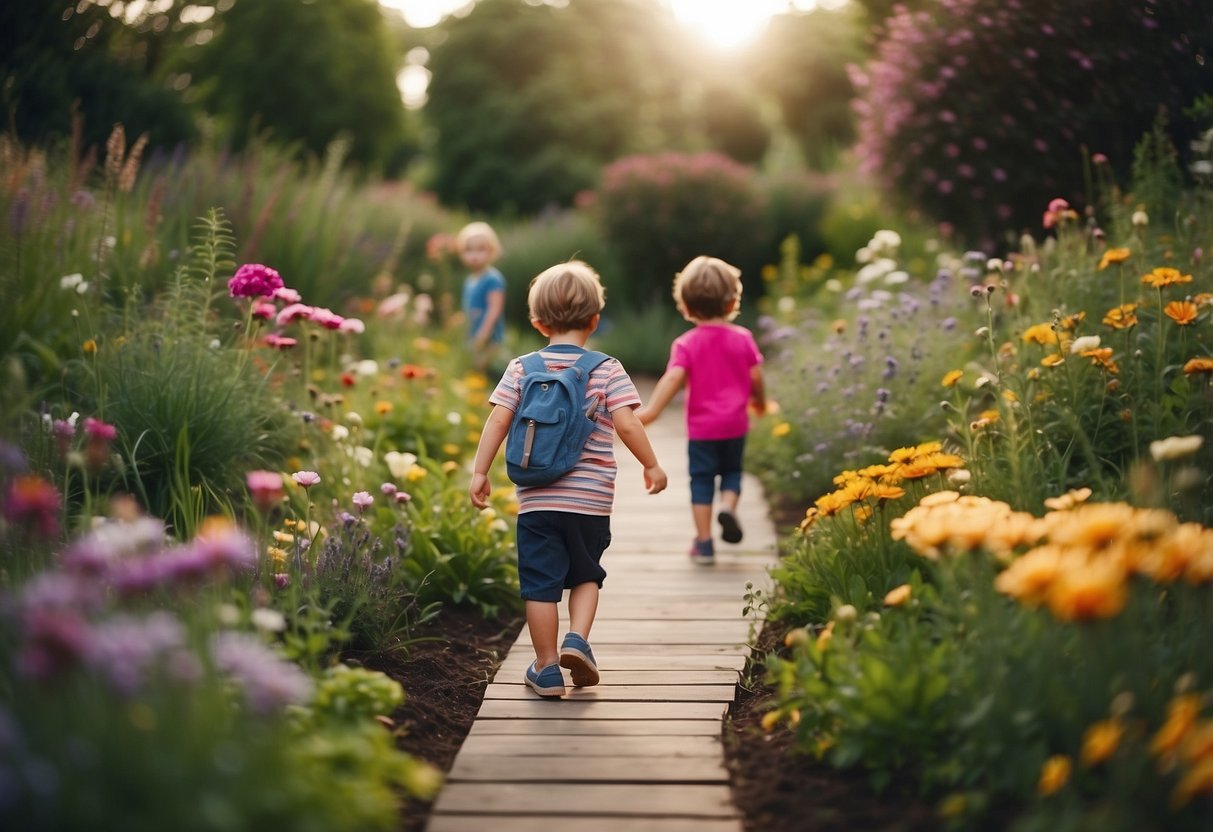
A tasting garden is a great way to engage kids by offering them a sensory experience through taste. Start by planting kid-friendly herbs like mint, basil, and parsley. Children will love nibbling on fresh leaves and learning how these herbs can flavor foods.
Include berry bushes such as strawberries, blueberries, or raspberries. These are easy to grow and delicious to eat straight from the garden.
Consider adding vegetables like cherry tomatoes or snap peas. They’re fun to pick and eat fresh. By involving kids in growing their own food, you teach them about healthy eating and gardening all at once.
9) Colored Pebble Path
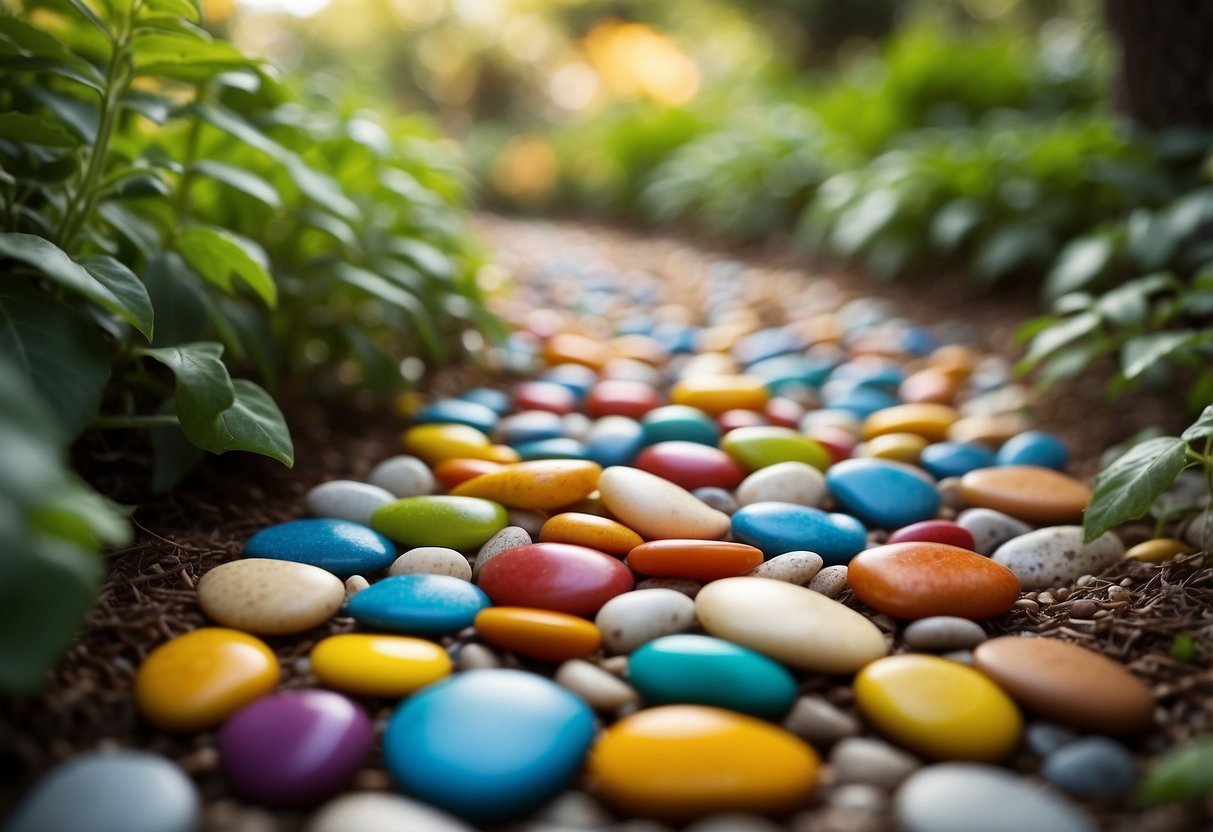
A colored pebble path is a fantastic sensory addition to your garden. It brings vibrant visuals and interesting textures for kids to explore.
You can use pebbles of various sizes, shapes, and colors. Arrange them in playful patterns or shapes to make the path even more engaging.
Make sure to use smooth, round pebbles to prevent any injuries. Kids will love walking barefoot on the path, feeling the different surfaces under their feet.
10) Mirror Play Zone
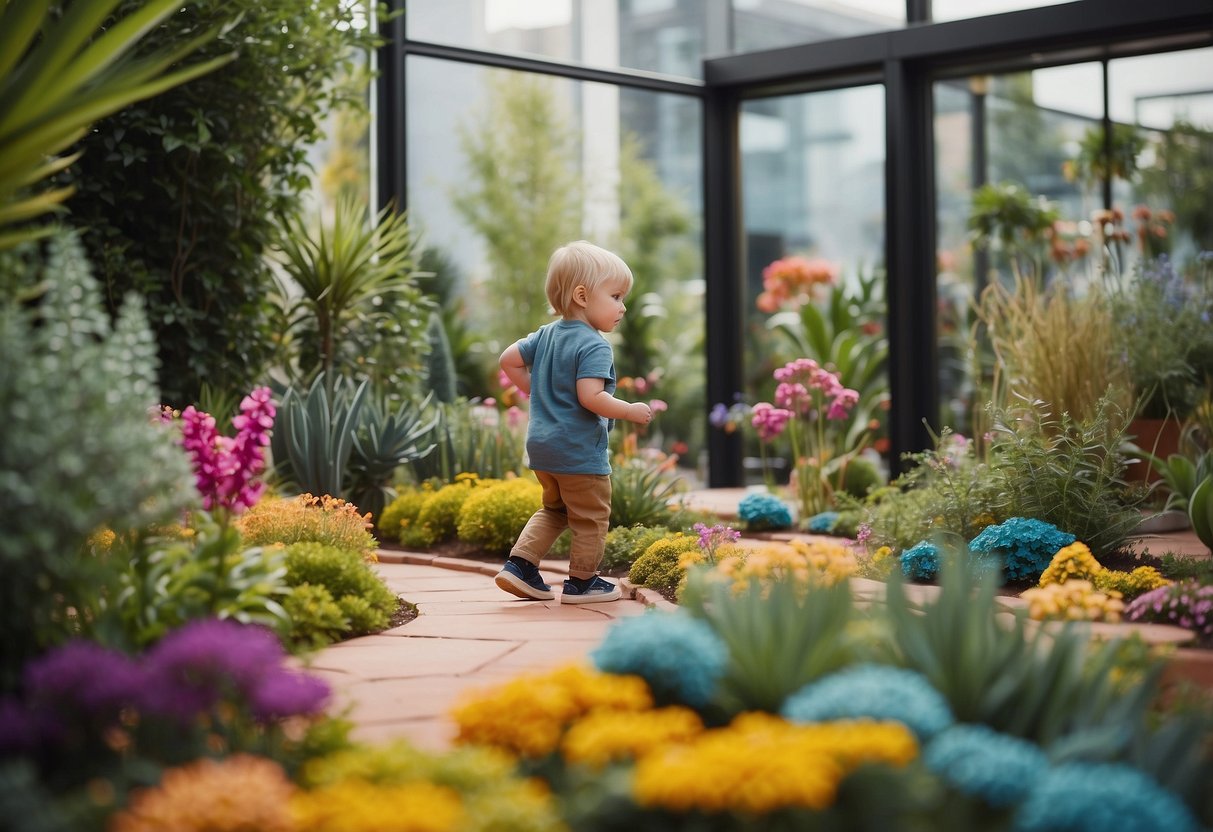
A mirror play zone in your sensory garden can be a magical addition.
Attach mirrors to fences or trees to create reflections. Kids love seeing themselves and the garden from new angles.
Use safe, shatterproof mirrors to prevent injuries. Your kids will enjoy hours of fun exploring light and reflections in their own special space.
Benefits of Sensory Gardens for Kids

Sensory gardens offer a variety of advantages for children, from aiding physical development to boosting cognitive abilities and emotional well-being. These gardens are rich with different textures, colors, and sounds that engage kids in numerous ways.
Physical Benefits
Sensory gardens can greatly improve physical health. Working in the garden helps to develop fine motor skills. Tasks like planting seeds, digging, and watering require coordination and strength.
Running and moving through the different parts of the garden can also enhance gross motor skills. Kids get to stretch, bend, and move around, which helps in improving their flexibility and stamina. Moreover, being outdoors means they get more exposure to sunlight, which is crucial for bone health.
Having accessible features, like raised beds for children in wheelchairs, ensures that all kids can benefit. Using different pathways, like wood chips or gravel, adds an element of balance and stability training.
Cognitive Benefits
Interaction with a sensory garden can stimulate cognitive growth. Activities like identifying plants, measuring soil, and observing changes in the garden help develop problem-solving skills.
These gardens also enhance sensory integration. Various textures, colors, and scents engage different senses, which can improve sensory processing abilities. Additionally, asking kids to describe what they see, hear, and feel can boost their language skills.
Older kids may benefit from creating garden plans or maintaining journals to track plant growth. This kind of engagement helps in developing planning and observational skills, and even introduces basic scientific principles.
Emotional Benefits
Sensory gardens offer a calming environment. Being in nature can reduce stress and anxiety levels by providing a peaceful setting. The scents of flowers and the sounds of water features, like fountains, can create a soothing atmosphere.
Working in a garden also contributes to a sense of accomplishment and responsibility. Planting seeds and watching them grow can boost self-esteem and confidence. Kids learn patience and the value of nurturing living things.
Interacting with a sensory garden encourages social skills as well. Kids working together on garden tasks learn to cooperate and share, fostering teamwork and friendship. This makes sensory gardens not just a personal, but a communal enriching experience.
Designing a Sensory Garden for Children
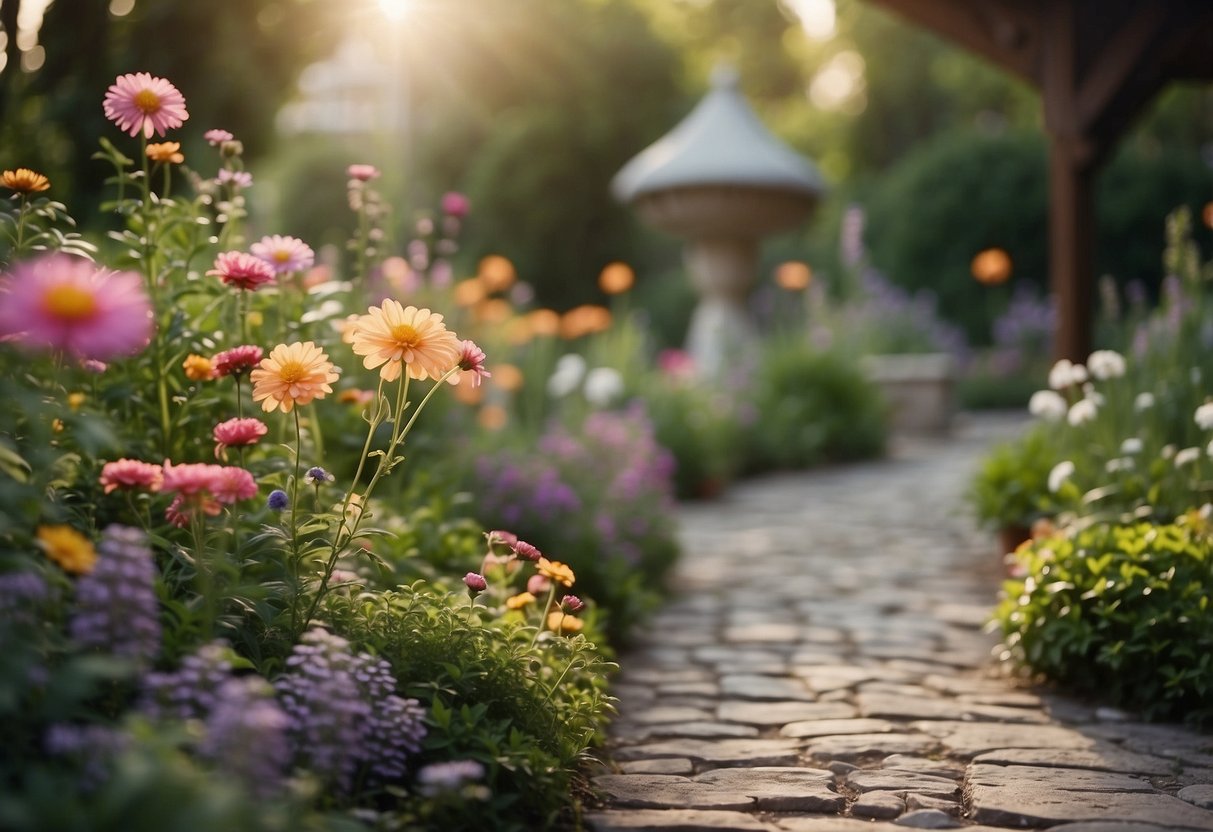
Creating a sensory garden is all about engaging a child’s senses through thoughtful plant choices and varied textures. It provides kids with a space to explore and enjoy with sight, smell, taste, touch, and hearing.
Choosing the Right Plants
When selecting plants, focus on ones that are safe and stimulating. Include plants with bright colors like sunflowers and marigolds, which are visually engaging. Herbs such as mint and lavender can provide pleasant smells, while plants like lemon balm and basil offer safe tasting experiences.
Ensure that all plants used are non-toxic. Flowers like calendula not only look pretty but are also safe. Grouping all edible plants in one spot can make it clear which ones can be consumed. Avoid plants with thorns or anything that can cause skin irritation. Using varying heights and shades can add visual interest and make the garden more engaging.
Here’s a simple list of ideal plants:
- Bright colors: Sunflowers, zinnias
- Pleasant smells: Lavender, rosemary
- Safe to taste: Lemon balm, basil
Incorporating Different Textures
Textures bring a tactile element to your garden. Add crunchy wood chips or gravel paths for a different feel underfoot. Soft grass and smooth pebbles can create contrast. Incorporating smooth-leaved plants like lamb’s ear and silky petals of flowers like tulips adds variety.
Features like a solar-powered water fountain can introduce the sound of trickling water. Encourage kids to notice sounds around them such as rustling leaves or chirping birds. Clay pots, stone pathways, and wooden benches can also help to enhance the sensory experience by adding more textures.
Using a mix of textures and materials creates a richer environment, making the garden an exciting place for children to explore and interact with.
Activities and Engagement

In a sensory garden, engaging kids in different activities can make their experience memorable and educational. Focus on interactive elements and seasonal activities to keep their interest alive throughout the year.
Interactive Elements
Interactive elements are key to a sensory garden. Consider adding a sensory pathway with materials like crunchy wood chips or smooth stones. These pathways can help improve kids’ balance and coordination while also providing tactile experiences. Encourage kids to touch and feel various textures of leaves, bark, and soil.
Install a solar-powered water fountain to add the gentle sound of trickling water, which can be calming and encourage auditory exploration. Provide tools for digging and watering, allowing children to engage in “heavy work” activities. This type of physical involvement is good for their proprioceptive sense, improving motor skills and spatial awareness.
Seasonal Activities
Plan activities that change with the seasons to keep kids excited about the garden. In spring, plant bright and colorful flowers like tulips and alliums. Let the kids help with planting and teach them about how plants grow. During summer, focus on harvesting fruits and vegetables. This gives kids the opportunity to learn about where food comes from and enjoy the tastes of their labor.
In autumn, involve kids in raking leaves and collecting colorful foliage for art projects. Winter activities might include making bird feeders to hang in the garden. This not only supports local wildlife but also keeps kids engaged with nature even in colder months. Rotate these activities to maintain a dynamic and ever-changing environment that keeps children involved.







